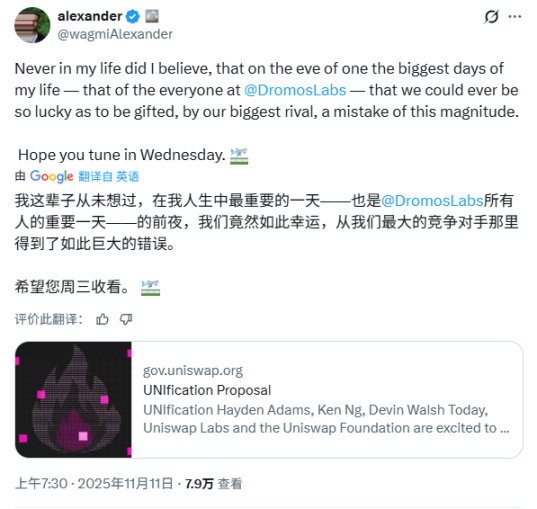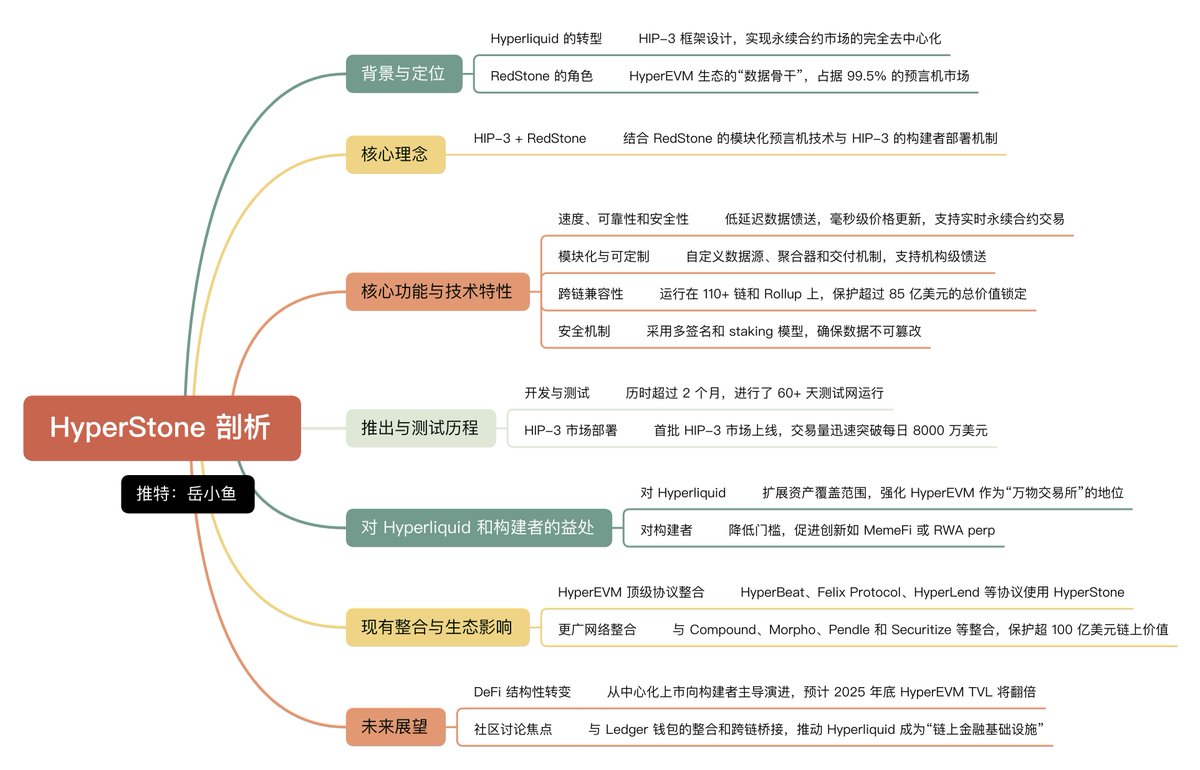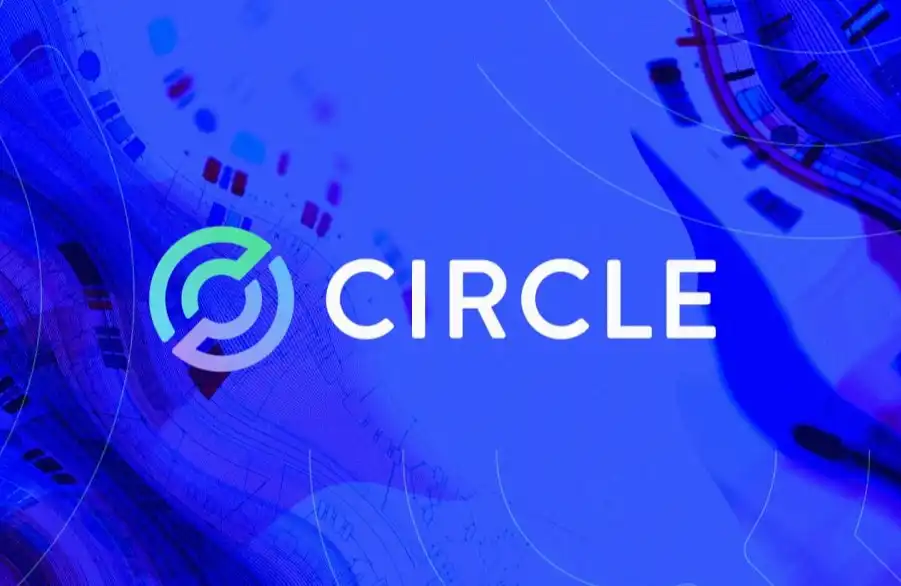Global payments giant Visa is quietly staging a digital currency revolution, with its breakthrough focusing on the vast creator and gig economy workforce.
“The launch of stablecoin payments is to enable anyone, anywhere in the world, to truly access funds universally within minutes—not days,” announced Chris Newkirk, President of Visa Commercial and Money Movement Solutions, at the Web Summit on November 12, 2025.
Visa has launched the groundbreaking Visa Direct stablecoin payment pilot, allowing businesses to pay recipients directly in USD stablecoins to their stablecoin wallets. This service targets the rapidly growing creator economy and freelancer group, who are often constrained by delays and high costs of traditional cross-border payments.
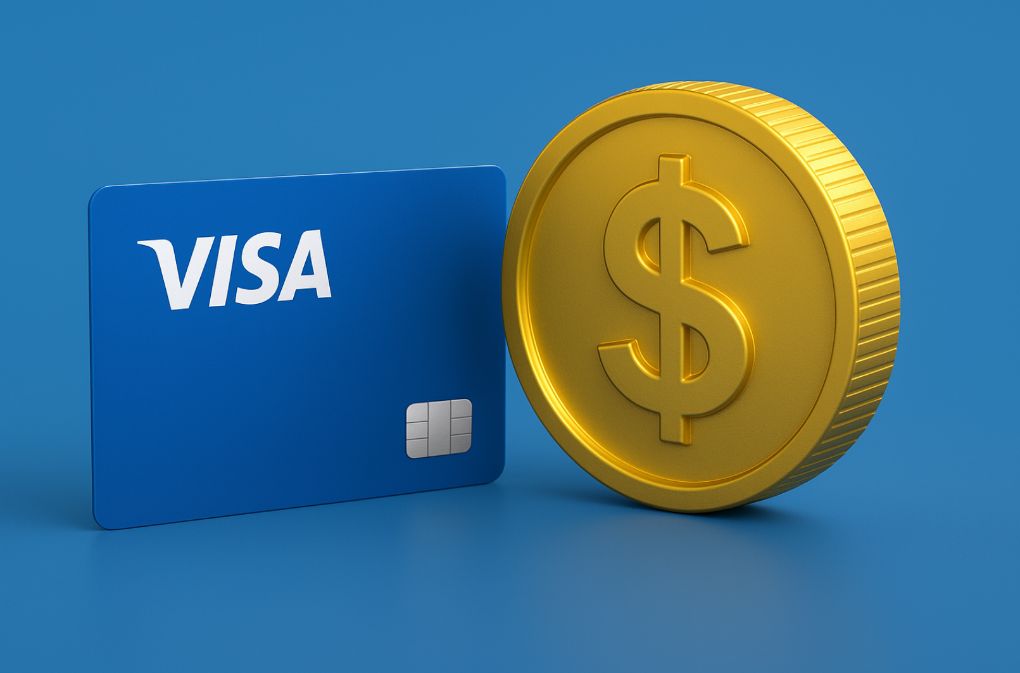
I. Targeting Pain Points: A Revolution in Cross-Border Payment Speed and Cost
This Visa pilot directly addresses the core pain points of traditional cross-border payments—speed and accessibility. According to Visa’s “2025 Creator Economy Report,” 57% of digital content creators list fast access to funds as their primary reason for preferring digital payment methods.
For millions of freelancers, creators, and gig economy workers worldwide, payment speed directly impacts their cash flow and business stability.
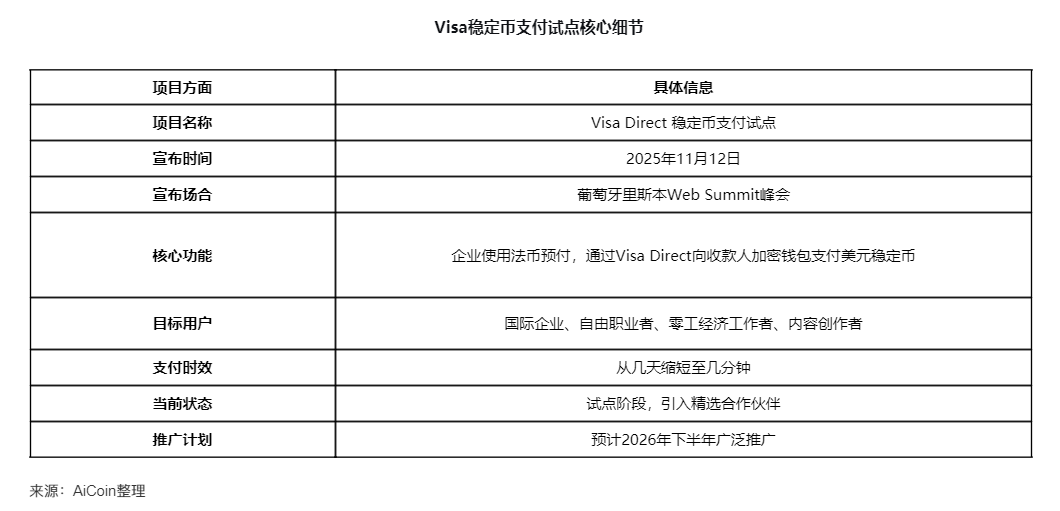
Visa’s new pilot project allows businesses to pre-fund payments in fiat currency, while recipients can choose to receive USD stablecoins such as USDC directly. This model reduces cross-border payment times from several days in traditional banking systems to just a few minutes, fundamentally changing the game.
II. Strategic Deployment: Visa’s Diversified Stablecoin Ecosystem
● Visa’s exploration of the stablecoin sector is not a sudden move, but a gradual strategic deployment. As early as 2021, Visa began settling USDC on Ethereum, and later expanded to the Solana blockchain in 2023.
● In October this year, Visa CEO Ryan McInerney revealed during an earnings call that the company would launch support for four new stablecoins on four “unique blockchains.”
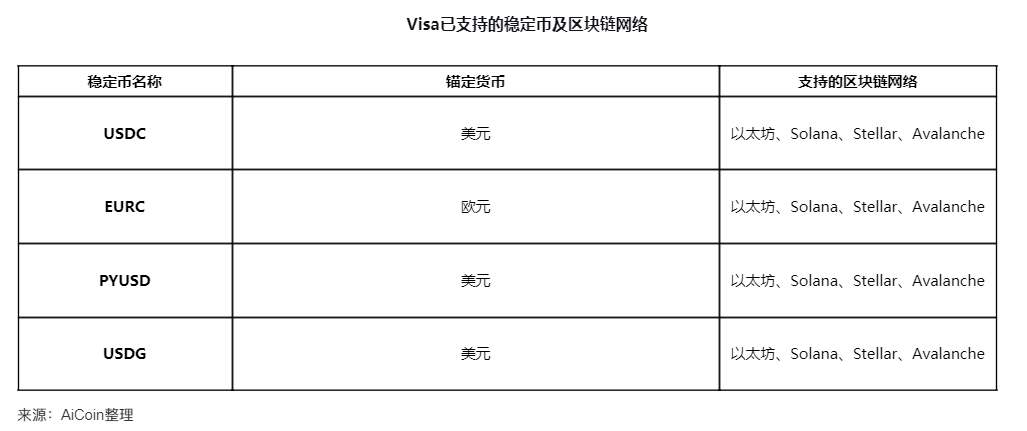
These moves will enhance the list of stablecoins and blockchain networks already supported by Visa. McInerney pointed out that Visa has already seen “particular momentum in stablecoins,” having facilitated $140 billions in crypto and stablecoin flows since 2020.
III. Market Shift: From Speculation to Utility
● Visa is ramping up its stablecoin strategy at a time when the market is undergoing a fundamental shift from speculation to utility. According to Orbital’s Q3 2025 Stablecoin Retail Payments Index, the retail stablecoin payments market is showing signs of maturity, shifting from explosive, incentive-driven growth to more sustainable organic activity.
● The index shows that after a promotional surge in previous quarters, total transactions eased from 1.33 billions to 1.21 billions, but genuine payments such as P2P transfers, remittances, and SME transactions are driving a healthier market share.
● Orbital co-founder Luke Wingfield Digby noted: “Stablecoins are no longer just about growth, but about utility. The next step is to make stablecoins usable everywhere—connecting networks, use cases, and regions to make them a truly universal payment layer.”
IV. Regulatory Breakthrough: The Catalytic Effect of the GENIUS Act
● The passage of the US GENIUS Act has cleared the way for traditional financial giants like Visa to enter the stablecoin sector. Signed into law by President Donald Trump in July 2025, the act establishes a federal regulatory framework for stablecoins, clarifying compliance requirements for issuance and servicing.
● Regulatory clarity has spurred large-scale entry by traditional financial institutions. A group of major international banks—including Goldman Sachs, Deutsche Bank, Bank of America, BNP Paribas, and Citibank—have formed an alliance to explore issuing “reserve-backed” digital currencies on public blockchains.
● Meanwhile, other players in the payments sector are also taking action. Mastercard joined Paxos’ Global Dollar Network in June 2025 to enable stablecoin settlement for its merchants and payment rails.
V. Empowering Banks: Building Stablecoin Infrastructure
● Visa’s stablecoin strategy is not only focused on end users, but also on providing infrastructure for traditional banks. McInerney stated at the October earnings call: “We are beginning to enable banks to mint and burn their own stablecoins through the Visa Tokenized Asset Platform, and we are adding stablecoin capabilities to enhance cross-border money movement with Visa Direct.”
● This strategic positioning makes Visa a bridge between traditional finance and the digital currency world, rather than a mere competitor. By providing banks with the technical capability to issue and manage stablecoins, Visa is building a hybrid ecosystem that leverages the advantages of blockchain technology while retaining the stability of the existing financial system.
● Visa’s Head of Crypto, Cuy Sheffield, stated at the Singapore FinTech Festival: “We are working with banks around the world to help them develop digital asset strategies and determine how to effectively build in the stablecoin sector.”
VI. Full Rollout and Industry Competition in 2026
Visa plans a broader rollout in the second half of 2026, as customer demand grows and regulatory frameworks advance. This timeline aligns with the overall development pace of the stablecoin market.
● More and more companies are entering the stablecoin sector: Citigroup is exploring stablecoin payments, Western Union plans to launch a digital asset settlement system on Solana, and Wall Street banks like JPMorgan and Bank of America are also in the early stages of developing their own stablecoin projects.
● Industry competition is intensifying, with different entities choosing different models, from fully collateralized retail stablecoins to tokenized deposits and wholesale settlement tokens. Against this backdrop, Visa, with its extensive network advantages and incremental implementation strategy, is poised to occupy a central position in the digital currency payments ecosystem.


